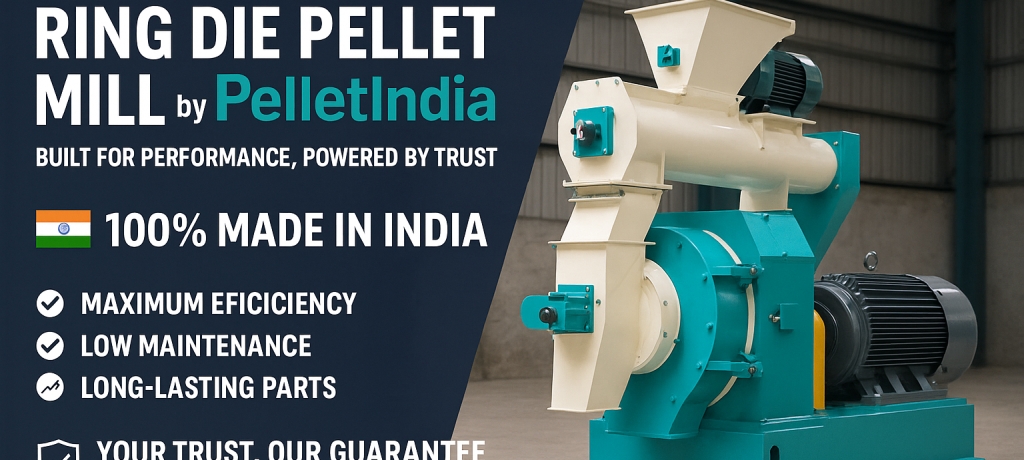Biomass Energy Scope in Andaman & Nicobar
The scope for biomass energy in the Andaman and Nicobar Islands is promising, but it requires strategic planning due to geographical, environmental, and logistical challenges. Here’s a breakdown of its potential: 🌿 1. Biomass Availability in Andaman & Nicobar ✅ Sources of Biomass: ⚡ 2. Energy Demand & Opportunity 🌱 3. Government Support & Sustainability […]
Continue readingRing Die Pellet Mill by PelletIndia – Built for Performance, Powered by Trust
🇮🇳 100% Made in India✅ Maximum Efficiency | 🔧 Low Maintenance | 🔩 Long-Lasting Parts📈 Available in 1 TPH, 2 TPH, 3 TPH, and 5 TPH Models🛡️ Your Trust, Our Guarantee🌐 www.PelletIndia.com📞 Contact: +91 9427210483 📞 Contact Us for Biomass Solutions📍 Servoday Plants & Equipments Ltd📞 +91 9427210483 | +91 9427210484📧 [email protected]🌐 www.PelletIndia.com👤 Contact Person: […]
Continue readingWhat is the NIC Code for Biomass Pellet and Biofuel Manufacturing in India?
✅ NIC Codes Related to Biomass (Pellets, Briquettes, Biofuels) And 🏛️ Procedure to Apply or Endorse NIC Codes in Government Records ✅ NIC CODES RELATED TO BIOMASS INDUSTRIES 🧾 The Code to Remember: NIC Code is important to ensure the right recognition and avail benefits offered by the government to take your biomass business further.✅ […]
Continue readingCan I get support for Napier Grass-based pellet plants in Gujarat or Maharashtra? What are the schemes available?
Looking to set up a Napier Grass-based pellet plant in Gujarat or Maharashtra?You’re in luck—both states support agricultural biomass projects with subsidies and incentives.Central aid is available via MNRE’s Biomass Programme and BioURJA portal, alongside state-level perks.Here’s a practical eligibility checklist to help you get started. 📋 Eligibility Checklist for Napier Grass Pellet Plant Support […]
Continue reading🇮🇳 Biomass Co-firing in the Indian Power Sector: Key Challenges & the Way Forward 🔥🌱
🧾 Summary with Detailed Description: Biomass co-firing—blending biomass pellets with coal in thermal power plants—is a vital step in India’s low-carbon energy transition. Initiated by NTPC in 2017, it aims to reduce carbon emissions and tackle stubble burning pollution. Despite progress, several persistent challenges hinder sustainable large-scale adoption: 💡 Resolution Plans: With improved policy, infrastructure, […]
Continue reading



